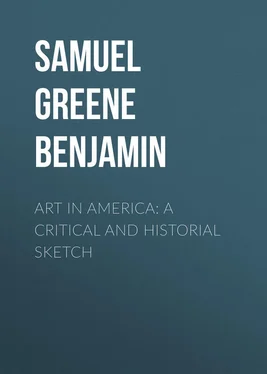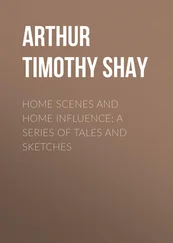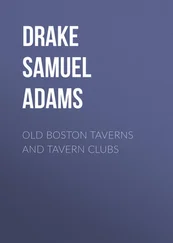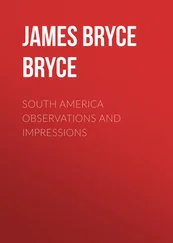Samuel Benjamin - Art in America - A Critical and Historial Sketch
Здесь есть возможность читать онлайн «Samuel Benjamin - Art in America - A Critical and Historial Sketch» — ознакомительный отрывок электронной книги совершенно бесплатно, а после прочтения отрывка купить полную версию. В некоторых случаях можно слушать аудио, скачать через торрент в формате fb2 и присутствует краткое содержание. Жанр: foreign_antique, foreign_prose, на английском языке. Описание произведения, (предисловие) а так же отзывы посетителей доступны на портале библиотеки ЛибКат.
- Название:Art in America: A Critical and Historial Sketch
- Автор:
- Жанр:
- Год:неизвестен
- ISBN:нет данных
- Рейтинг книги:4 / 5. Голосов: 1
-
Избранное:Добавить в избранное
- Отзывы:
-
Ваша оценка:
- 80
- 1
- 2
- 3
- 4
- 5
Art in America: A Critical and Historial Sketch: краткое содержание, описание и аннотация
Предлагаем к чтению аннотацию, описание, краткое содержание или предисловие (зависит от того, что написал сам автор книги «Art in America: A Critical and Historial Sketch»). Если вы не нашли необходимую информацию о книге — напишите в комментариях, мы постараемся отыскать её.
Art in America: A Critical and Historial Sketch — читать онлайн ознакомительный отрывок
Ниже представлен текст книги, разбитый по страницам. Система сохранения места последней прочитанной страницы, позволяет с удобством читать онлайн бесплатно книгу «Art in America: A Critical and Historial Sketch», без необходимости каждый раз заново искать на чём Вы остановились. Поставьте закладку, и сможете в любой момент перейти на страницу, на которой закончили чтение.
Интервал:
Закладка:
Few of those who recognize the late Samuel F. B. Morse as the inventor of our telegraphic system are aware that in early life he was an artist, and gave evidence of succeeding both in sculpture and painting. Although his preference was for the latter, we are inclined to think that he was best fitted to be a sculptor. He became the pupil of Allston in London, and modelled at that time a statue called the "Dying Hercules," which won the prize of a gold medal offered by the Adelphi Society of Arts for the best single figure. From that statue he afterward composed a painting of the same subject, which is now in New Haven, a work of unquestioned power, showing thorough anatomical knowledge and a creative imagination. But, while there was reason to predict an interesting art career for the young American, circumstances beyond his control drifted him away from the chosen pursuit of his youth, and his fame and fortune were eventually achieved in the paths of science. It is interesting in this connection to read the words which Morse, suffering from the pangs of disappointment, wrote to one who asked his advice about becoming a painter: "My young friend, if you have determined to try the life of an artist, I wish you all success; but as you have asked my honest opinion, I must say that, if you can find employment in any other calling, I advise you to let painting alone. I have known so many young men – some of them of decided talent, too – who, after repeated trials and failures, became discouraged, gave up further effort, and went to ruin." Notwithstanding that such were his views when he abandoned art, did not Morse, in the prosperous hours of his life, sometimes look back to his early art with a pang of regret? But while he continued in the profession of art, his activity was such that the National Academy of Design owes its origin to him, and with him closed the first period of art in the United States.
We see that this division of our pictorial art – with the exception of Thomas Birch, of Philadelphia, a marine painter of some repute, and a few others of less note – was devoted to the figure; and, if sometimes feeble in result, was inspired by lofty motives. In historical art and portraiture it was, if not strictly original, yet often very able, and fairly maintained itself on a level with the contemporary art of Europe. Owing to the entire want of opportunities for professional education at home, our leading artists, with few exceptions, were forced to pass a good part of their lives in foreign studios.
We also find that a feeling for the beauty of form, as indicated in black and white, or in sculpture, was scarcely perceptible in this stage of our art. With the exception of Shem Drowne and Patience Wright, who modelled skilfully in wax, the sense for plastic art was altogether dormant in the country; while any progress in architecture, until in recent years, was hopelessly ignored. It is true that the active, restless intellect of Thomas Jefferson sought to endow the nation with a sixth order of architecture, called the Columbian, and patriotically resembling a stalk of Indian-corn. The small pillars made after this design are in one of the vestibules of the basement of the Capitol at Washington, where the ardent patriot may visit them, and see for himself the beginning and the end of the only order of architecture ever attempted in this country.
Through much tribulation, much earnest faith, and enthusiasm for art, our early painters prepared the way for the national art of the future. They met only moderate appreciation in their native land at that time. But we owe much to them; and in our preference for present methods – which must in turn be superseded by others – let us not forget the honor due to the pioneers of American art. In the first articulate utterances of a child, or in the dialect of an aboriginal tribe, lie the rudiments of a national tongue eventually carried to a high degree of culture; and the first rude art or poesy of a young people sometimes possesses touches of freshness, charming simplicity, or virile force which are too liable to be softened away beyond recall by the refinements of a later civilization.
II.
AMERICAN PAINTERS.
1828-1878
THE generation immediately succeeding the American Revolution was devoted by the people of the young republic to adjusting its commercial and political relations at home and abroad. Early in this century, however, numerous signs of literary and art activity became apparent, and in 1815 the North American Review was founded. We mention this fact, although a literary event, as indicating the point in time when the nebulous character of the various intellectual influences and tendencies of the nation began to develop a certain cohesive and tangible form. It was about the same time that our art, subject to similar influences, began to assume a more definite individuality, and to exhibit rather less vagueness in its yearnings after national expression.
Gilbert Stuart, one of the most remarkable colorists of modern time, died in the year 1828. In the same year the National Academy of Design was founded. These two events, occurring at the same time, seem properly to mark the close of one period of our art history and the dawn of its successor; for notwithstanding the excellence of Stuart's art, and the virile character of the art of some of his contemporaries, yet their efforts had been spasmodic and unequal; much of it had been done abroad under foreign influences; and there was no sustained patronage or art organization at home which could combine their efforts toward a practical and common end. The first president of the new institution was Samuel F. B. Morse.
The National Academy of Design superseded a similar but less wisely organized society, which had led a precarious existence since 1801. With the new institution was collected the nucleus of a gallery of paintings and casts; and from the outset the idea suggested by its name was carried out, by furnishing the most thorough opportunities for art-instruction the country could afford.
Although seemingly fortuitous, the establishment of the Academy of Design really marks the opening of a distinct era in the history of American art; during which it has developed into a rounded completeness to a degree that enables us, with some measure of fairness, to note the causes which led to it, which have nourished its growth, and which have made it a worthy forerunner of new methods for expressing the artistic yearnings of those who are to follow in years to come. It has indicated a notable advance in our art; it has, in spite of its weakness or imitation of foreign conventionalisms, possessed certain traits entirely and distinctively native; and has been distinguished by a number of artists of original and sometimes unusual ability, whose failure to accomplish all they sought was due rather to unfortunate circumstances than to the lack of genuine power, which in another age might have done itself more justice.
It is interesting to observe at this juncture that our art was influenced by exactly the same causes as our literature of the same period; and, like our national civilization, presents a singular reaching after original expression, modified sometimes by an unconscious imitation of foreign thought and methods.
There is one fact connected with the early growth of our art which is entirely contrary to the laws which have elsewhere governed the progress of art, and is undoubtedly due to the new and anomalous features of our social economy. Elsewhere the art-feeling has undeviatingly sought expression first in earthen-ware or plastic art, then in architecture and sculpture, and finally in painting. We have entirely reversed this order. The unsettled character of the population – especially at the time when emigration from the Eastern to the Western States caused a general movement from State to State – together with the abundance of lumber at that time, evidently offered no opportunity or demand for any but the rudest and most rapidly constructed buildings, and anything like architecture and decorative work was naturally relegated to a later period; and for the same reason, apparently, the art of sculpture showed little sign of demanding expression here until after the art of painting had already formulated itself into societies and clubs, and been represented by numerous artists of respectable abilities.
Читать дальшеИнтервал:
Закладка:
Похожие книги на «Art in America: A Critical and Historial Sketch»
Представляем Вашему вниманию похожие книги на «Art in America: A Critical and Historial Sketch» списком для выбора. Мы отобрали схожую по названию и смыслу литературу в надежде предоставить читателям больше вариантов отыскать новые, интересные, ещё непрочитанные произведения.
Обсуждение, отзывы о книге «Art in America: A Critical and Historial Sketch» и просто собственные мнения читателей. Оставьте ваши комментарии, напишите, что Вы думаете о произведении, его смысле или главных героях. Укажите что конкретно понравилось, а что нет, и почему Вы так считаете.












